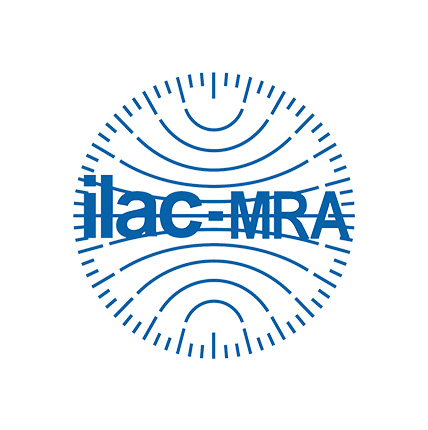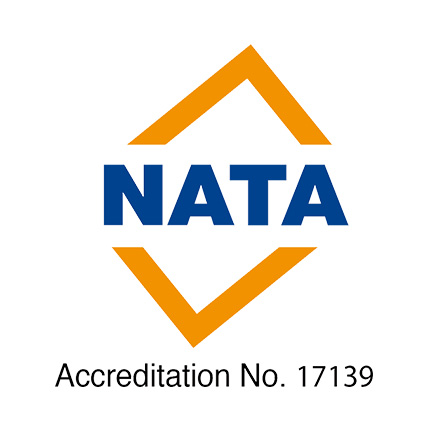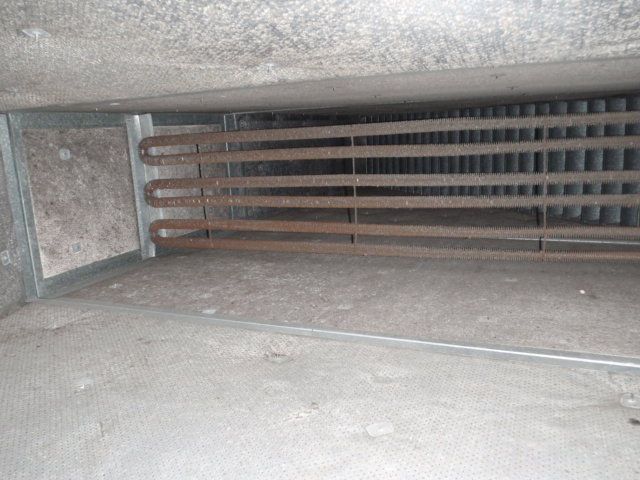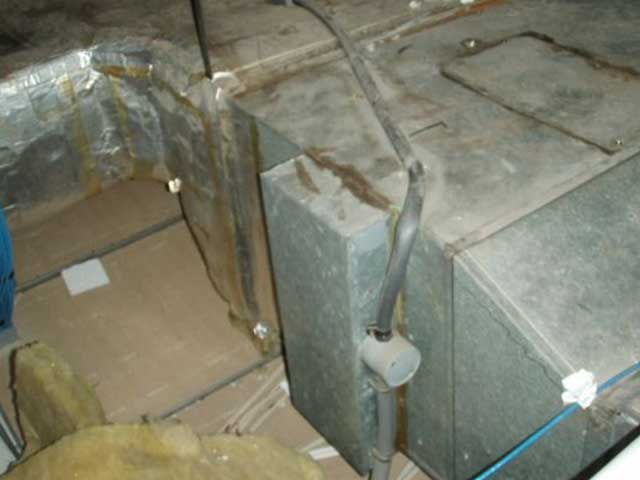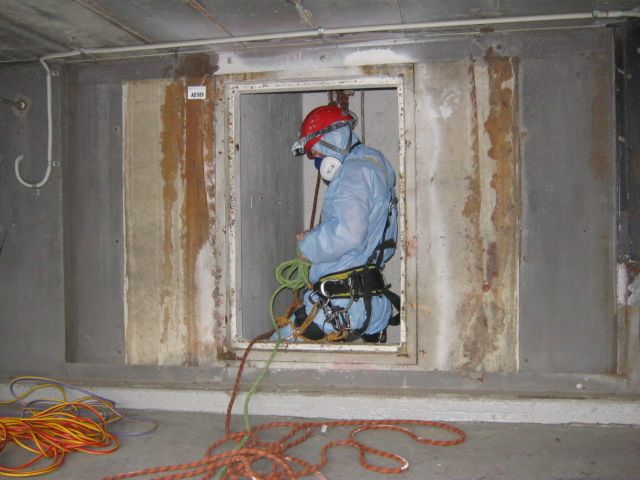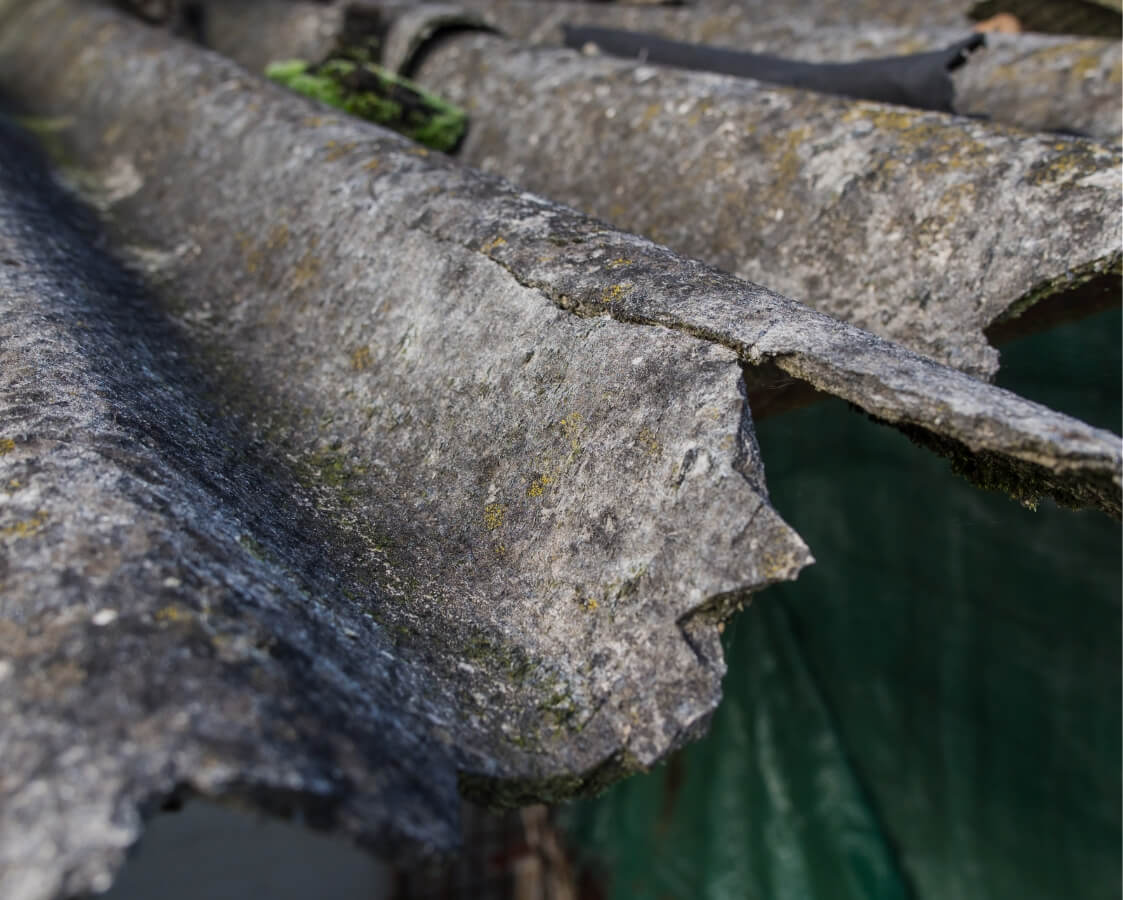Air conditioning systems and ductwork within buildings can contain asbestos whereby exposure to friable and respirable fibres may occur unknowingly.
This may occur for many years until it may be found due to significant disturbance by HVAC or air conditioning tradesman through upgrades and refurbishments. The first tell-tale sign may be white dust which may contain visible fibres one morning when first arriving at work. Other times, the hidden asbestos may not be found until an asbestos assessor has identified that there may be potential for asbestos to be contained within the HVAC air conditioning system.
Where might the asbestos in the HVAC air conditioning system reside?
Asbestos was used widely for the thermal resistance properties which was a primary use and concern in HVAC air conditioning systems, particularly in the insulation surrounding the reheating banks or coils throughout the ductwork. During the winter as warm air is being distributed throughout the building, it will cool down; to prevent this, re-heating bars or coils similar to an old electric bar heater are located throughout to re heat the air and reduce the thermal inefficiency of the system It is within these sections of reheating bars, that may contain a low density asbestos material called millboard.
The millboard material surrounding the heating banks will over time start to deteriorate and release and liberate the material, including the asbestos fibres into the air stream. This may then expose people over time whilst they are occupying the building. Identification of asbestos within the ductwork can be done by a visual inspection of the heater banks and a sample of the material sent to a NATA accredited lab for asbestos testing. Sampling of the duct through scarping up the dust under controlled procedures by an asbestos assessor or using tape samples is most appropriate, depending on the amount of dust present that may be able to be sampled.
What is the likely exposure?
The exposure from deteriorating millboard is generally low level and when asbestos air monitoring is conducted, will generally measure airborne asbestos concentration below the detectable limit of 0.01 fibres per millilitre; however each building needs to be independently inspected to confirm the level of risk. Any asbestos air monitoring analysis is required to be conducted by a NATA accredited laboratory as per the Guidance Note On The Membrane Filter Method For Estimating Airborne Asbestos Fibres 2nd Edition [NOHSC:3003(2005)].
This detection limit for asbestos concentration is some 10 times less than the exposure standard for asbestos, and the low level exposure is generally not a major health hazard until there is significant disturbance.
Significant disturbance of the asbestos in the air conditioning system may result from cleaning of the ductwork or HAVC & air conditioning tradesman cutting into the ductwork that contains the asbestos mill board material. This potential exposure is a concern not only for the people within the building, but more so the HVAC and air conditioning tradesman who may themselves be subject to asbestos exposure on a daily basis.
The most common form of asbestos identified within millboard surrounding the heater banks is chrysotile asbestos commonly known as white asbestos. Amosite asbestos has also been found, more commonly where there has been a sprayed applied limpet asbestos within air conditioning plenums and ceiling voids where the asbestos is transported through at velocity.
What precautions should be taken?
Firstly both an asbestos inspection of the building should be undertaken with the asbestos register present and available for all people within a building and those tradesman including HVAC and air conditioning consultants being able to have access to this information. If there is not any information relating to the potential for asbestos within the air conditioning system then an inspection of the heater banks and ductwork including dust and insulation samples be undertaken.
In many instances dust within the ducts can contain asbestos, particularly at the elbow joints where the particles impact against the ducting and fall down due to the inadequate transport velocity at the sharp bends in the duct work.
Where asbestos is found within the building, an asbestos management plan should outline emergency procedures, what to do and who to contact, along with a risk assessment, asbestos air monitoring plan and asbestos sampling procedures.
For more information on asbestos in air condition systems, please contact one of the Asbestos Assessors or Occupational Hygienists at Asbestos Testing .com.au
Be absolutely assured. Safe Environments is NATA accredited for asbestos Inspections and preparing asbestos management plans.
